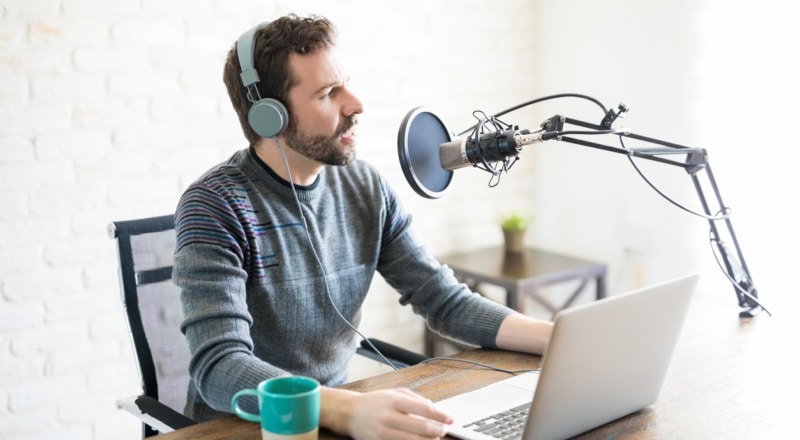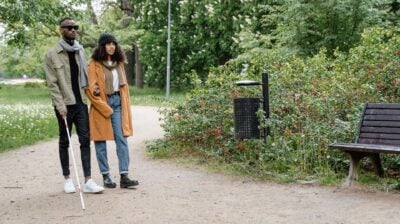The best steps to take to record your own podcast
After doing a podcast for a year in college, Ross has some tips for getting started

For anyone creating a podcast for the first time, it may be difficult to know where to start. It might be a completely new experience speaking into a microphone and talking about a particular subject that you are interested in. From the planning, logistics and technology, to the recording and editing, there are lots of things to juggle before you have the final piece for people to listen to. It may seem like a lot, but once you get the hang of it, it is as easy as some simple steps! After doing a podcast for a year in college and recently a refresher podcast workshop in the SpunOut.ie offices, here are my recommendations for the steps to take to record your very own podcast.
Step 1: Have an idea and expand on it
Like all good podcasts, having that spark of an idea about what you want to speak to the world about is the foundation of any good podcast. This can be something that you are passionate about, a topic that is not often discussed in the mainstream media but you think should be, or an idea suggested by someone else and you want to be part of that conversation. Either way, ensure you can expand on that idea, asking questions about parts you want to explore, and think about who to have on the podcast. If you can find examples of other people talking about the topic if can be a massive help to finding your niche in the crowded podcast market.
Step 2: Decide what kind of podcast you want to have
While you may have an amazing idea for a podcast, the term podcast itself can be rather complicated to figure out, as there are many ways a podcast can be structured. It can be an interview podcast, where you interview someone with a specialist interest in a topic, a conversational podcast between friends or a solo podcast where you talk yourself, having a conversation just between you and the listener. Once you have figured that out, it can make both the first and third step easier.
Step 3: Filter out what you will be talking about in that podcast
While you (hopefully) have tons of ideas about what you want in your podcast, a problem that I had when recording my podcast was that we had too many ideas to try and fit in such a short timeframe. Instead of trying to fit a huge chunk of information within thirty minutes, we split the podcast into two sections, which would have led to two thirty-minute podcasts instead of one sixty-minute podcast. That allowed listeners to have a break and come back to the next episode after having time to absorb the first batch of information. My group also edited some sections to make the podcast flow and sound conversational rather than sticking to pure information. This editing made it easier to listen and easier to record.
Step 4: Ensure the logistics of the podcast are sorted
While it might be an overlooked step until the last minute, knowing how you will record your podcast is as important as any other step. You might be fortunate to have a professional recording microphone to use (or even set-up by someone else in an ideal world) or using a mobile microphone or just a mobile phone. Regardless of how you record the podcast, make sure you test the sound quality before fully recording the podcast, as the last thing you want is grey noise to disrupt an incredibly interesting podcast.
Step 5: Record the podcast and keep a few housekeeping rules in mind!
While the order of all of the steps above can be changed, recording the podcast is both the most flexible and most rigid part of doing a podcast. While you finally have the ability to record all the research and good chats onto audio, make sure to follow a few housekeeping rules if applicable to the podcast. Ensure only one person speaks at a time, practice breathing quietly through your nose and avoid saying hmm’ or ‘yeah’ when agreeing with a person. It takes practice so work on it during everyday conversations leading up to your recording. Trust me when I say it improves the sound massively and makes editing the podcast way simpler. Lastly, ensure you have prompts to keep the recording going, although if you do have an awkward pause, don’t worry, that can be edited out.
Step 6: Edit the podcast! (If applicable)
First of all, congratulations! The (mostly) hard part is over, and this step might not even be needed for you if you want your podcast raw. However, if you want to edit it (or do not have someone else to do that for you), editing the podcast is your next step before releasing it. There are many applications to edit audio, such as paid apps like Adobe Audition and Logic Pro X, but also really good free apps such as Audacity (the one I use). With this, although easier said than done, you can cut out bits of audio you don’t or that disrupt the flow of the podcast. Add an intro if you have one and reduce any background noise that might be in the audio. There are many ways to find out how to do this on YouTube, so watch a few videos on it before getting started.
Step 7: Share the podcast with the world!
The best (and easiest) bit! Now that you have the podcast ready to share, share it! There are many podcast hosting sites to choose from, but Anchor is my favourite as it allows you to easily share your podcast on Spotify, Apple play and loads of other podcasting sites in one go. To make sure the podcast is also listened to, use your social media to let friends and family listen to your podcast. Who knows, if Anchor tells you that you have a good listenership, you might even be inspired to make it a regular series of episodes!
While some of these steps may seem long and complicated, you get so much back from the time you invest, helping your self-confidence and learning how to hear your voice back without mildly cringing, something I still do even after hearing it a lot! If you want to make a podcast for SpunOut.ie, make sure to email [email protected] and read these guidelines here. and I hope to hear your voice soon!






